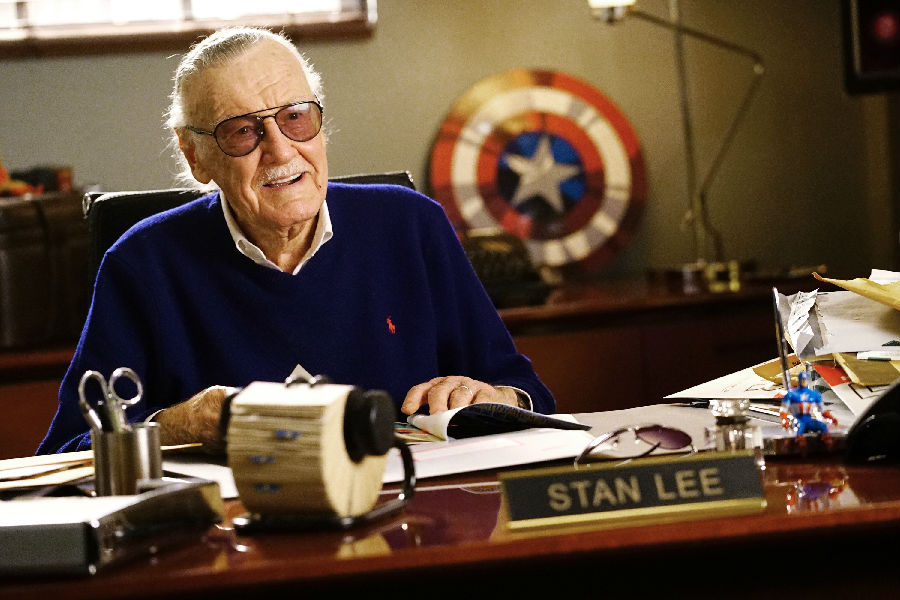JUDY WOODRUFF: Now: remembering a man who had a big impact on the movies by the legendary comic book characters he helped create. William Brangham has the story.
WILLIAM BRANGHAM: He's credited with bringing to life some of the biggest, baddest, most iconic superheroes of the 20th century. Stan Lee, as the head of Marvel Comics, helped revolutionize comic books 40 years ago, and, more recently, helped turned those characters into a worldwide movie juggernaut that's grossed over 20 billion dollars globally. Bob Batchelor wrote the biography Stan Lee: The Man Behind Marvel.
BOB BATCHELOR, Author, Stan Lee: The Man Behind Marvel: Stan Lee had a part in creating or co-creating some of America's and the world's greatest popular cultural figures.
WILLIAM BRANGHAM: Back in the 1960s, Lee was a writer and editor at Marvel Comics, a company being eclipsed by the much bigger D.C. Comics, which had the sturdy franchises of Superman and Batman. Lee was asked to come up with something, anything, to compete. His next project, done with his partner, artist Jack Kirby, was The Fantastic Four, and it was a surprise hit, particularly because its oddball characters had weird powers, could never seem to get along, and defied the superhero archetype. This more complex hero was something Lee repeated, with great success, with his subsequent characters, like the Amazing Spider-man, the Incredible Hulk, and the Avengers series. In a 2002 interview, at the premiere of the first Spider-Man movie, Lee described just how hard it was to convince his editor decades ago to approve the story line.
STAN LEE, Comic Book Creator: I said, I want to do this guy called Spider-Man. He's a teenager. He's got a million problems. Everything goes wrong. My publisher said: Stan, you have lost it. He said: First of all, nobody likes spiders. You can't call a hero Spider-Man. Secondly, a teenager can't be a hero. He can only be a sidekick. And lastly, he said: You say he's got all kinds of problems? Don't you understand, Stan? He's a hero. Heroes don't have problems. That's why they're heroes. So, it shows what I knew.

BOB BATCHELOR: Stan's real power was capturing this kind of everyday superhero mentality that people were really attracted to. It wasn't the godlike speaking of a Superman or the stilted language of Batman. It was a language that people could really relate to and understand on a deeply personal level.
WILLIAM BRANGHAM: While there were lingering questions about whether Lee shared the proper credit with his collaborators over the years, his influence on the comic book industry was indisputable. Lee later tried to turn his characters into live action, like in the 1980s TV series The Incredible Hulk. But it wasn't until The X-Men and then Spider-Man in the early 2000s did the Marvel movie enterprise really take off. Since then, its over a dozen films have resurrected and interwoven the stories of over 20 individual characters, many of whom were first drawn almost 50 years ago. Last year's blockbuster Black Panther struck many firsts, a black superhero, a largely all-black cast, numerous strong black female characters, all done by a black director, Ryan Coogler.
BOB BATCHELOR: One of the most important things that Stan did is, he always pushed the boundaries of what comic books would publish.
Stan saw that comic books and superheroes should represent what we see in everyday life. And so he was ahead of the curve on many of the issues that we take for granted today or that we are still grasping with today.
WILLIAM BRANGHAM: Despite his success, the last years of Lee's life were riven with stories of financial mismanagement and painful, drawn-out legal fights with members of his family. But die-hard fans will still look for him in the films, where he regularly made cameo appearances.
STAN LEE: You know, I guess one person can make a difference.
WILLIAM BRANGHAM: Like here, when he appeared in Spider-Man 3, talking to the young Peter Parker. Stan Lee was 95 years old. For the PBS NewsHour, I'm William Brangham.
JUDY WOODRUFF: And thanks for that remembrance.












